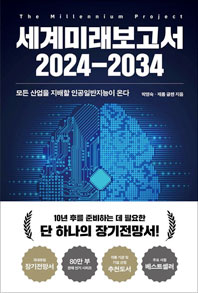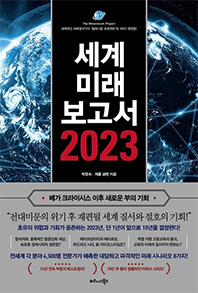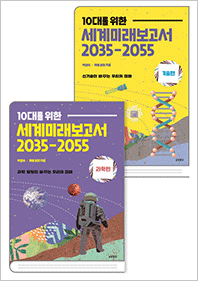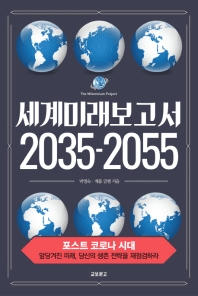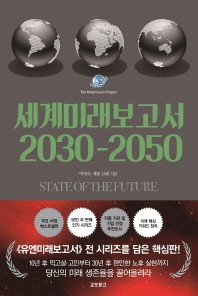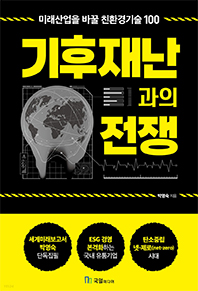Our new book Aftershocks and Opportunities 2: Navigating the Next Horizon brings together 37 future thinkers from around the globe to explore the shifts, shocks, opportunities, and risks that could shape our world over the next two decades.
This 2040 Flash Foresight survey was designed to gauge the responses of our global network of future thinkers to some of the most societally challenging ideas arising in the book. Presented below are the key findings from this survey on life in 2040.
Environment - 68% agree, 21% disagree, and 11% neither agree or disagree that “By 2040 over one billion lives will be lost due to climate change and environmental degradation.” Of these, 27% agree very strongly, while only 4% disagree very strongly.
Context – The latest report from the Intergovernmental Panel on Climate Change (IPCC) presents a deeply concerning outlook on the increasing risks and potential impacts of dangerous climate change. The immediacy of these risks has been highlighted by an increasing number of adverse weather events around the globe - from forest fires to flooding and droughts. Projections of the toll on human live are regularly being revised upwards.

Automation – 54% agree and only 29% disagree that “By 2040 robots and artificial intelligence (AI) will be performing the majority of everyday roles in the workplace and across society - from lawyers, police officers, and teachers through to chefs, pilots, and journalists.” Of these, 8% agree very strongly, while only 3% disagree very strongly.
Context – Historically, we have seen a proportion of roles, jobs, and even sections of professions be eliminated every few years due to changes in the nature of work and automation. The pace of automation is now accelerating, and investment in AI around the globe is estimated to be over US$1 trillion. The payoff from such investments will largely be in headcount reduction in the short term – with the opening up of new markets and revenue opportunities happening in the medium to long term. In every sector and profession, the technology has been seen to outperform humans is some or all aspects of the roles undertaken.
Jobs – 74% agree and only 14% disagree that “By 2040 the fastest growing occupations will be jobs that don't exist or are starting to emerge today - such as brain and body augmentation technicians, whole of life therapists, and personal health and wellness curators.” Of these, 16% agree very strongly, while only 2% disagree very strongly.
Context – As existing sectors and businesses look to seize on the efficiencies that Artificial Intelligence (AI) automate and reduce headcounts and costs, many jobs are due to become replaced by technology. Hence the question arises over where the displaced bank staff, lawyers, retail assistants, civil servants, and production workers will find employment. Businesses in emerging sectors from synthetic biology to 3D printed manufacturing and autonomous vehicles are all coming to market with highly automated models requiring far fewer workers for each pound or dollar of revenue generated.
In response, many will look to work in entirely new fields and professions that are already on a growth path, or that could emerge in the next two decades. Hence, we can expect to see the growth of opportunities in fields such as autonomous transport, rapid construction, the greening of housing, atomically precise manufacturing, the crypto economy, mixed reality technosports, and in virtual metaverse businesses. However, with a growing global population, continuing advances in healthcare, and rising life expectancy, the biggest areas of growth could be in the health and wellness sector.
Unemployment – 49% agree and 38% disagree that “By 2040 over 50% of the workforce will be permanently unemployed and living on a guaranteed basic income in return for undertaking continuous personal development and performing a range of community services.” Of these, 7% agree very strongly, while only 4% disagree very strongly.
Context – The concern is that, unlike previous industrial revolutions, the rise of AI will simply eliminate many jobs permanently. At the same time, businesses in the new sectors coming through will require far fewer and more highly skilled staff. Hence the spectre increases of a growing segment of permanently unemployed people with few prospects of ever finding a job. The pandemic related furlough payments made by many nations to large numbers of the workforce have demonstrated the concept of guaranteed basic incomes. Such measures may become essential in the face of high permanent unemployment. Keeping the unemployed occupied in a meaningful manner could become a major challenge.
The Crypto Economy – 51% agree and 31% disagree that “By 2040 shares, bonds, loans, and all forms of savings and investment will become part of a global decentralised, transparent, and tokenised crypto economy.” Of these, 14% agree very strongly, while only 5% disagree very strongly.
Context – The crypto economy has grown rapidly to a market capitalisation of over US$2.2 trillion since Bitcoin was launched as the first cryptocurrency in January 2009. This is predicted to reach US$200 trillion over the next decade. Since launch, Bitcoin has been the best performing financial asset over any ten year period and crypto has seen the fastest adoption of any technology in history. Many suggest that all other financial markets could also start to adopt the decentralised, blockchain based, and cryptographically secure, models used by many crypto economy assets.

There is also growing interest in the idea of breaking traditional assets such as buildings, bonds, and equities down into fractionalised tokens, often valued at less than a penny or a cent. This is commonplace with crypto assets and the process is made possible by the use of highly automated ‘decentralised autonomous organisations’ (DAOs) that literally have no employees and answer only to their own code.
Citizenry – 50% of respondents disagree, 37% agree that “By 2040 our willingness to have our brains and bodies augmented and to allow full governmental access to our personal data will determine our individual rights, taxation level, access to services, and welfare payments.” Of these, 15% disagree very strongly, while only 5% agree very strongly.
Context - The field of human enhancement is evolving rapidly, with a range of interventions using physical augmentation, genetic modification. nootropic drugs, and electronic implants. A central issue is how such enhancements might influence individual performance and assessment in education and the workplace. Another concern is the extent to which governments will use the possession of such augmentations as a criteria to access key services. At the same time, there is a growing desire for governments and businesses to use more and more of our personal data. This is accompanied by a growing public debate over individual rights, and the incentives required in return for granting access to our data.
Childbirth – 67% disagree and 19% agree that “By 2040 over 25% of babies will be gestated outside the body in artificial wombs.” Of these 19% disagree very strongly, while only 5% agree very strongly.
Context - A range of science institutions around the world are pursuing the goal of reproduction without childbirth. For example, in March 2021, scientists from Israel’s Weizmann Institute of Science reported the successful gestation of hundreds of mice inside an artificial womb. Of course, it may take ten years or more for such an option to be offered to humans. Clearly, this would be a major advance for women who are unable to – or simply don’t want to – carry a child through pregnancy. However, there is also likely to be fierce debate around the topic and the right to choose - on social, moral, ethical, and religious grounds.

Life expectancy – 46% disagree and 41% agree that “By 2040 newborn children will have a life expectancy 150 or more due to breakthroughs in the science of life extension.” Of these, only 8% disagree very strongly, while 9% agree very strongly.
Context - The science of life extension is accelerating at a rapid pace with a range of techniques being developed to extend human lifespans by 10, 20, 50, or even 100 years. The science is progressing at a pace far faster than society’s ability to comprehend what is possible and have a meaningful discussion on what’s appropriate and desirable.
Education – 49% disagree and 30% agree that “By 2040 our education from birth to death will be paid for by investment funds that then take a proportion of each individuals’ entire lifetime incomes and wealth in return.” Of these, 14% disagree very strongly, while only 3% agree very strongly.
Context - Education is becoming a grand global challenge in the face of a growing planetary population, increasing skills mismatches in the workplace and wider labour force, and the risk of rising long term unemployment through job automation. Some estimates suggest that worldwide investment in education needs to be at least 10 times higher than today if we are to ensure children and adults alike are equipped to survive and thrive in a rapidly changing environment. One of the financing options is for the private sector and institutional funds to make a direct investment in individuals’ education in return for a share of the future returns.
Asset Ownership and the Rental Society – 43% disagree and only 16% agree that “By 2040 corporations will own the majority of homes.” Of these, 8% disagree very strongly, while only 5% agree very strongly.
Context – “By 2030, we’ll own nothing, rent everything, and be happy about it.” This is the prediction of Klaus Schwab, the Founder and Executive Chairman of the World Economic Forum. This shift to a rental society could be accelerated by the automation of jobs forcing people to sell their most valuable assets in order to survive. In the US, investment firm Blackstone is now the biggest owner of private accommodation, with over 200 other financial institutions entering the domestic home ownership market, with even entire towns being snapped up by corporations. In the UK, Lloyds Bank and retailer John Lewis are looking to purchase thousands of domestic properties. In the coming years, many other corporations are expected to see domestic property as an appreciating asset to add to their balance sheets.
Preparing for the Future. When asked what respondents should be doing to future proof their life, health, financial security, and happiness, the five most emphasised factors here were self-care, environmental considerations, self-sufficiency, financial security, and skills:
- Focus on physical health and wellbeing (32%)
- Move to / stay in a country with strong environmental performance and commitments (14%)
- Learn self-sufficiency (12%)
- Buy / keep hold of property (12%)
- Start retraining now for the next job or career (10%)
Respondent Data.
Gender: 76% Male 24% Female
Age: Under 30 (3%), 30-39 (5%), 40-49 (18%), 50-51 (30%), 60-69 (26%), 70-79 (15%), and 80+ (3%).
Geographic Split: Respondents came from 49 countries, with the most from the US (26%) and the UK (22%).
Regional Split: North America (30%), Europe - Non EU (27%), European Union (23%), Asia (9%), Oceania (4%), South America and the Caribbean (3%), Africa (2%), Central America (1%), and the Middle East (1%).
Respondents: Participants from 35 sectors – with the largest groupings being education (16%), professional services (12%), information technology - applications, development, hardware, networking, and security (7%), research and think tanks (6%), marketing, advertising, sales, and market research (5%), and aviation, hospitality, tourism, and travel (5%).
Rohit Talwar is a global futurist, award-winning keynote speaker, author, and the CEO of Fast Future, working with leaders in global corporations, investment firms, NGOs, and governments. His primary expertise lies in helping clients understand and shape the emerging future. He has a particular focus on how we can advance business, society, and individual lives by harnessing the power of new thinking, innovation, and disruptive developments such as artificial intelligence, blockchain technology, and human enhancement. He is the lead editor and co-author of the new book Aftershocks and Opportunities 2: Navigating the Next Horizon published on September 28th, 2021.
Images:
//cdn.pixabay.com/photo/2020/06/19/09/16/fantasy-5316369_960_720.jpg
//cdn.pixabay.com/photo/2019/12/09/06/32/globe-4682786_960_720.jpg
//en.cryptonomist.ch/wp-content/uploads/2020/01/real-estate-1.jpg
//cdn.pixabay.com/photo/2020/07/06/02/51/unborn-5375169_960_720.jpg




